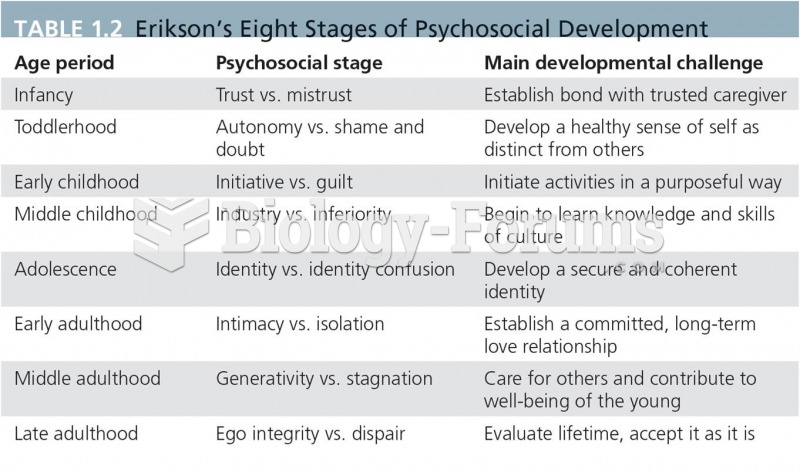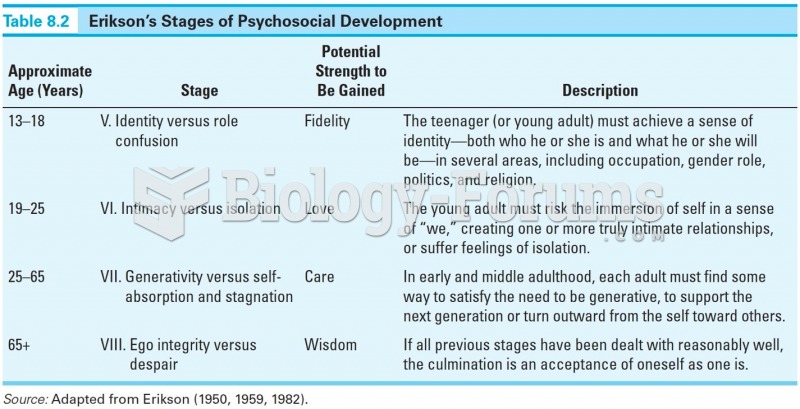|
|
|
Astigmatism is the most common vision problem. It may accompany nearsightedness or farsightedness. It is usually caused by an irregularly shaped cornea, but sometimes it is the result of an irregularly shaped lens. Either type can be corrected by eyeglasses, contact lenses, or refractive surgery.
Stroke kills people from all ethnic backgrounds, but the people at highest risk for fatal strokes are: black men, black women, Asian men, white men, and white women.
The human body produces and destroys 15 million blood cells every second.
Cutaneous mucormycosis is a rare fungal infection that has been fatal in at least 29% of cases, and in as many as 83% of cases, depending on the patient's health prior to infection. It has occurred often after natural disasters such as tornados, and early treatment is essential.
About 3.2 billion people, nearly half the world population, are at risk for malaria. In 2015, there are about 214 million malaria cases and an estimated 438,000 malaria deaths.
 From 1965 to 1968, American troops in Vietnam conducted “search and destroy” missions to shatter ...
From 1965 to 1968, American troops in Vietnam conducted “search and destroy” missions to shatter ...
 (A) Alternating thumb petrissage to paraspinal muscles from sacrum to shoulder. Search for areas of ...
(A) Alternating thumb petrissage to paraspinal muscles from sacrum to shoulder. Search for areas of ...





